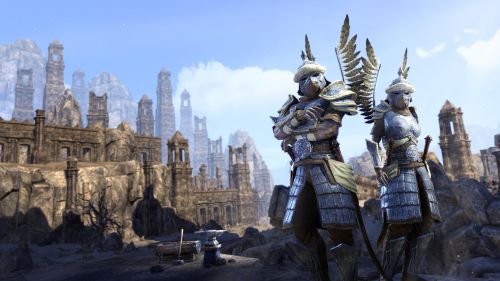It has been over seven years since Bethesda Game Studios sent the gaming world into a frenzy with a 36-second teaser. The clip, showing nothing more than a sweeping landscape and a nascent musical score, confirmed the existence of the most anticipated game on the planet: The Elder Scrolls VI. In the years since that 2018 announcement, the silence from the developer has been deafening, punctuated only by sparse, carefully worded assurances that the project is, in fact, real. Now, in late 2025, with a new generation of consoles in full swing and Bethesda’s sci-fi epic Starfield in the rearview mirror, the question on every fan’s mind has reached a fever pitch: Is The Elder Scrolls VI delayed?
To answer this question is to unravel a complex tapestry of game development philosophy, corporate strategy, and technological ambition. The simple answer is no, the game is not technically “delayed” because it has never been given a release date to be delayed from. However, the reality for fans is that the wait has far exceeded initial expectations, leading to a perception of a perpetual delay.
This definitive guide will explore every facet of The Elder Scrolls VI‘s long journey through development. We will dissect the timeline, analyze the strategic decisions that have shaped its progress, delve into the official statements from Bethesda and Microsoft leadership, and provide a realistic, data-driven forecast for when we might finally return to Tamriel. The wait may be agonizing, but the reasons behind it are crucial to understanding the future of this legendary franchise.
The Strategic Pipeline: Why Starfield Came First
Understanding the timeline for The Elder Scrolls VI is impossible without first understanding Bethesda Game Studios’ (BGS) methodical, one-project-at-a-time development cycle. For over two decades, the studio, under the leadership of Todd Howard, has focused its main development team on a single, massive project, seeing it from conception to post-launch support before moving the bulk of its resources to the next title.
After the release of Fallout 4 in 2015 and its subsequent DLC, the studio made a pivotal decision. Instead of immediately jumping into the next chapter of their flagship fantasy series, they chose to pursue a long-held passion project and a brand new IP: Starfield. In interviews, Todd Howard explained that the ambition for a new space-faring RPG was a “now or never” moment for the veteran team. They knew that if they developed Elder Scrolls VI first, the team would likely be too creatively spent to tackle a new universe afterward.
This decision placed Starfield squarely in the development path, pushing The Elder Scrolls VI further down the timeline. The timeline of BGS’s main studio projects illustrates this clearly:
- The Elder Scrolls V: Skyrim (2011)
- Fallout 4 (2015)
- Fallout 76 (2018 – a project with significant support from other BGS studios)
- Starfield (2023)
Following this established pattern, The Elder Scrolls VI was always destined to be the next major single-player title after Starfield. The years from 2018 to 2023 were not years of delay for TES VI, but rather the peak development years for Starfield.
Deconstructing the “Development” Timeline
One of the most misunderstood aspects of modern AAA game development is the definition of “in development.” For a game of this scale, the process is broken into distinct, multi-year phases. The status of The Elder Scrolls VI has slowly progressed through these stages.
A. Conceptualization & Pre-Production (2018 – 2023): When The Elder Scrolls VI was announced in 2018, it was barely in pre-production. This phase is where the core ideas, setting, narrative themes, and technological needs are established. A small team works on concept art, story outlines, and prototyping new systems. During this entire period, the majority of BGS’s talent was dedicated to building the 1,000-planet universe of Starfield. Official statements from Bethesda’s Pete Hines during this time consistently described the game as being in “early development,” which was an accurate, if frustrating, description.
B. Full Production (Late 2023 – Present): In August 2023, just before the launch of Starfield, Pete Hines confirmed that The Elder Scrolls VI had officially left pre-production and entered early production. This marked a significant milestone. Following the release and initial patching of Starfield, the bulk of the development team transitioned over to The Elder Scrolls VI. This is the current phase as of September 2025. Full production involves building the world, writing and recording dialogue, creating assets like armor and creatures, programming quests, and integrating all the gameplay systems. This is the most labor-intensive and time-consuming part of the entire cycle.
C. The Playable Milestone (2024): In a 30th-anniversary message for the series in March 2024, Bethesda provided a rare update, stating that they were playing “early builds” of the game. This doesn’t mean the game was anywhere near complete. It means the core engine and foundational world map were functional enough to be explored internally. This is a crucial step for testing scale, mechanics, and the overall “feel” of the game long before it’s ready for public eyes.
So, while the game has been “in development” for over seven years, it has only been in full, focused production for approximately two years. Given that a game of this magnitude typically requires five to seven years of full production, the timeline begins to look much more realistic.

The Microsoft Factor: A Blessing of Time and Resources
The acquisition of Bethesda’s parent company, ZeniMax Media, by Microsoft in 2021 is another critical piece of the puzzle. This move has had several profound impacts on the development of The Elder Scrolls VI.
- Platform Exclusivity: It is now all but certain that The Elder Scrolls VI will be an Xbox and PC exclusive. Leaked FTC documents and statements from Microsoft Gaming CEO Phil Spencer have made it clear that major BGS titles will be leveraged to strengthen the Xbox Game Pass ecosystem. This allows the development team to focus on optimizing for a smaller, more unified set of hardware platforms, which can streamline development.
- Relief from Financial Pressure: As a first-party Xbox studio, BGS is no longer under the same pressure to rush a product to market to meet quarterly earnings for an independent publisher. Microsoft is playing the long game with its content pipeline. They would rather give a team like BGS the time and budget to create a masterpiece that drives Game Pass subscriptions for years to come than a rushed product that disappoints. This corporate environment encourages taking the time necessary to get it right.
- Technological Investment: The game is being built on the next iteration of Bethesda’s proprietary engine, the Creation Engine 2, which debuted with Starfield. The lessons learned and technology developed for Starfield—from procedural generation tools to updated lighting and animation systems—are now being refined and enhanced for The Elder Scrolls VI. Microsoft’s backing ensures the team has the resources to push this technology to its absolute limit.
Reading Between the Lines: Official Statements and Projections
Bethesda and Microsoft executives have been consistently cautious with their language, but their statements provide a clear picture.
- Todd Howard has repeatedly stated that he regrets announcing the game so early, acknowledging it was done to assuage fans’ fears that the studio was only focusing on Fallout and new IP. He has emphasized the desire for the game to be a “decade-long” title, similar to Skyrim, which requires an immense upfront investment in technology and world-building.
- Phil Spencer has mentioned The Elder Scrolls VI as being “five-plus years away” in interviews conducted around the time of Starfield‘s launch. This statement, made in 2023, directly points to a release window of 2028 or later. During the 2025 Xbox Showcase, the announced 2026 lineup for Xbox did not include TES VI, further solidifying that the game is not close.
- The Next Project: BGS has also confirmed that their project after The Elder Scrolls VI will be Fallout 5. This public roadmap demonstrates the studio’s long-term vision and reinforces the sequential nature of their development pipeline, locking TES VI firmly in its current spot.
A Realistic Release Window: When Can We Expect to Play?
By synthesizing the development cycle data, the transition from pre-production to full production, and the official statements, we can construct a realistic forecast.
- Full Production Start: Late 2023.
- Average BGS Production Cycle: 5-7 years.
- Low-End Estimate: 2023 + 5 years = 2028.
- High-End Estimate: 2023 + 7 years = 2030.
Therefore, the most logical and evidence-based release window for The Elder Scrolls VI is between 2028 and 2030. A 2028 release would be aggressive but possible, while a 2029 release feels most probable, allowing for six years of focused, full-time development. This timeline aligns perfectly with Phil Spencer’s “five-plus years away” comment and accounts for the sheer scale and technical ambition that the sequel to Skyrim demands.
Conclusion: A Necessary Wait for a Generational Game
The Elder Scrolls VI is not delayed in a technical sense. Instead, it is a victim of a transparent but exceptionally long-term development strategy, announced far earlier than any other game of its kind. The wait has been fueled by the sequential development of Starfield and Bethesda’s unwavering commitment to focusing its core team on one massive project at a time.
The reality is that this extended timeline, now buffered by the immense resources of Microsoft, is likely a good thing for the final product. It has allowed for the creation and refinement of new technology in Creation Engine 2. It has provided the team with creative distance from Skyrim, and it ensures the game will be built exclusively for powerful, modern hardware.
For the millions of fans eagerly awaiting their next journey, the truth is that the adventure is still several years away. The silence from Bethesda is not a sign of trouble, but a hallmark of a studio deep in the trenches of creation. The Elder Scrolls VI is not a game being rushed for a holiday season; it is an event being crafted to define a generation of gaming. And for a prize like that, the wait, however agonizing, may just be worth it.













